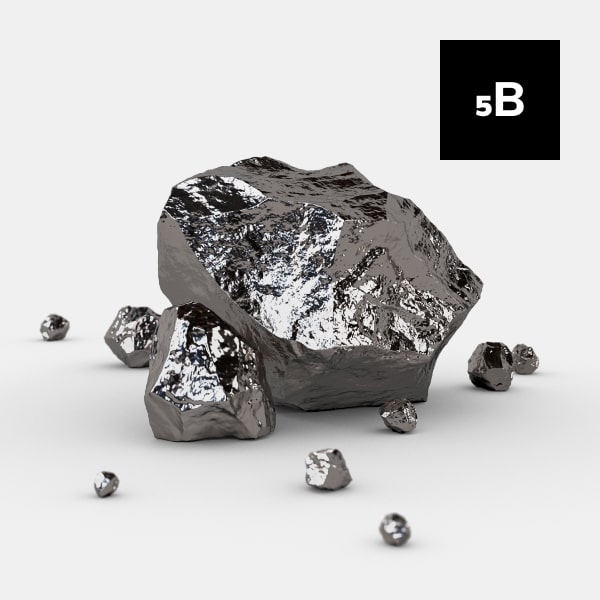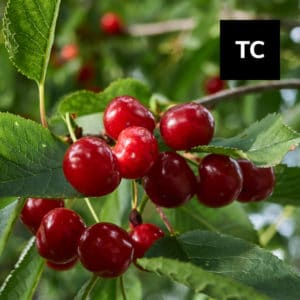Overview
Boron is a trace mineral that plays an important role in the body’s metabolism of vitamin D and sex hormones. Likewise, It helps calcium and magnesium to be absorbed. Best known for bone health support, it also helps increase the half-life of common supplements for metabolism, supports memory and fine motor skills in seniors, reduces inflammatory biomarkers, raises levels of antioxidant enzymes, and supports wound healing.
Key Benefits
- Supports brain function
- Provides antioxidant support
- Provides anti-inflammatory effects
- Supports bone growth and maintenance
- Improves wound healing
- It aids the body’s utilization of estrogen, testosterone, and vitamin D
- Boosts magnesium absorption
- May ameliorate adverse effects of chemotherapeutic agents
- Helps remove heavy metal toxins
History of Usage
Compounds of borax, particularly borax, have been used by humans for thousands of years. The Arabic word buraq, meaning white, is the source of the name “borax.”
French chemists Joseph-Louis Gay-Lussac and Louis-Jaques Thenard first isolated boron in 1808. It is a multi-purpose element and is used in the steel industry and amorphous boron is used as a rocket fuel igniter and in pyrotechnic flares. Boron is used in semiconductors, and boron oxide is used in glassmaking and ceramics. Compounds of boron are found in eye drops, mild antiseptics, and washing powders.
In the form of boric acid or borates, traces of boron are necessary for growth in plants, animals, and humans. The ancient Egyptians used boron compounds for mummification and in medicines. The first conclusive evidence for the use of medicinal borax dates back to the 8th century in Mecca and Medina. Its presence in plants has been known since 1857, and in the 1870s it was discovered that sodium borate and boric acid could be used as a food preservatives. It was important during both World Wars as a food preservative until scientists realized that in high doses boron was posing a health threat.
Although in the 1920s scientists discovered that boron was an essential nutrient for plants, it wasn’t until 1981 when researchers suggested that boron could alleviate arthritic symptoms and that boron deficiencies could contribute to bone abnormalities. Since then, hundreds of reports have shown that boron is a bioactive mineral that has numerous beneficial actions for humans.
Biochemistry
Boron is a mineral that’s easily absorbed through the gastrointestinal epithelium and may reach an absorption rate of about 90%. When it enters the body, it is hydrolyzed to boric acid, which is absorbed by enterocytes and transported through the blood. It is suggested that during transport boron is linked to substances containing cis-hydroxyl groups. The mechanism by which boron is incorporated remains inconclusive.
Most tissues in the body do not accumulate boron, but bone, nails, and hairdo, while fat has lower boron levels than other tissues. boron can be found in blood, urine, and other bodily fluids in the form of boronic acid. Increases in dietary intake had no significant effect on blood boron levels, suggesting that the body maintains boron homeostasis by increasing urinary excretion. However, the regulatory mechanisms for boron homeostasis have yet to be identified. Ureters and small amounts of boron are also excreted through the skin (sweat), breath (breath), and digestive juices (feces).
The presence of boron in the body is not routinely assessed in medical settings. Boron intake appears to be related to urinary boron levels, according to the majority of research. Boron levels in postmenopausal women range from 34 to 95 ng/mL (3.14 to 8.79 mcmol/L) during fasting plasma concentrations.
Third National Health and Nutrition Examination Survey data shows adults and pregnant women consume between 0.87 and 1.35 mg/day, while school-aged children consume between 0.75 and 0.96 mg/day (NHANES III; 1988-1994). Boron is abundant in plant foods, so vegetarians tend to consume more of it than non-vegetarians. Breastfeeding women consume an average of 1.27 mg/day of boron in their diets. When it comes to daily boron intake, babies get about 0.55 mg and kids get about 0.54 mg.
Adults typically consume between 1.0 and 1.5 mg of boron per day, mostly in the form of dietary supplements and foods.
Recent Trends
The worldwide market for boron was valued at $2.2 billion in 2020 and is expected to reach $3 billion by the end of 2026, growing at a CAGR of 4.5% during 2021-2026. Much of that growth is due to agricultural and industrial demand.
Inorganic borates and mono- or di-sugar-borate esters, such as calcium fructoborate, are found in food and beverages.
Boron is available as a stand-alone dietary supplement or in combination with a few other nutrients, often other minerals, in the form of dietary supplements. Dietary supplements typically contain between 0.15 and 6 mg of elemental boron per serving. For example, sodium borate, sodium tetraborate, boron amino acid salts, boron citrate, boron citrate aspartate, boron citrate citrate, boron gluconate, boron picolinate, calcium fructoborate, and calcium fructoborate aspartate are all examples of boron’s many dietary supplement forms. If you are looking for information about the amount of elemental boron in a supplement, not its total weight, consult the Supplement Facts label.
Precautions
- Boron is safe for most people when taken in doses up to 20 mg per day.
- Pregnant and breastfeeding women aged 14-18 should not take more than 17 mg per day.
- It is possibly unsafe when taken in high doses, and may result in skin inflammation, irritability, tremors, convulsions, weakness, headaches, depression, diarrhea, vomiting, and infertility in men.
- Boron might act like estrogen and should not be taken by individuals who have any condition that might be exacerbated by exposure to estrogen.
- Individuals with kidney disease should not take boron.
References
- Pizzorno L. Nothing Boring About Boron. Integr Med (Encinitas). 2015;14(4):35-48.
- Nielsen FH, Hunt CD, Mullen LM, Hunt JR. Effect of dietary boron on mineral, estrogen, and testosterone metabolism in postmenopausal women. FASEB J. 1987;1(5):394–397.
- Turkez H, Geyikoglu F, Tatar A, Keles MS, Kaplan I. The effects of some boron compounds against heavy metal toxicity in human blood. Exp Toxicol Pathol. 2012;64(1–2):93–101.
- Beattie JH, Peace HS. The influence of a low-boron diet and boron supplementation on bone, major mineral and sex steroid metabolism in postmenopausal women. Br J Nutr. 1993;69(3):871–884.
- Nzietchueng RM, Dousset B, Franck P, Benderdour M, Nabet P, Hess K. Mechanisms implicated in the effects of boron on wound healing. J Trace Elem Med Biol. 2002;16(4):239–244.
- Naghii MR, Samman S. The effect of boron supplementation on its urinary excretion and selected cardiovascular risk factors in healthy male subjects. Biol Trace Elem Res. 1997;56(3):273–286.
- Nielsen FH, Mullen LM, Gallegher SK. Effect of boron depletion and repletion on blood indicators of calcium status in humans fed a magnesium-low diet. J Trace Elem Exp Med. 1990;3:45–54.
- Nielsen FH. The emergence of boron as nutritionally important throughout the life cycle. Nutrition. 2000;16(7–8):512–514.
- Travis, NJ, Cocks, EJ. The Tincal Trail: A History of Borax. London, UK: Harraps; 1984.
- Newnham, RE . Mineral imbalance and boron deficiency. In: McC Howell, J, Gawthorne, JM, White, CL, eds. Trace Element Metabolism in Man and Animals (TEMA-4). Canberra, Australia: Australian Academy of Science; 1981:400–402.
- Devirian TA, Volpe SL (2003) The physiological effects of dietary boron. Crit Rev Food Sci Nutr 43: 219-231.
- Hunt CD (2012) Dietary Boron: Progress in Establishing Essential Roles in Human Physiology. J Trace Elem Med Biol 26: 157-160.
- Eckhert CD. Trace Elements. In: A. Catharine Ross BC, Robert J. Cousins, Katherine L. Tucker, Thomas R. Ziegler, ed. Modern Nutrition in Health and Disease. 11th ed. Baltimore, MD: Lippincott Williams & Wilkins; 2014:248-51.
- Uluisik I, Karakaya HC, Koc A. The importance of boron in biological systems. J Trace Elem Med Biol 2018;45:156-62.
- Khaliq H, Juming Z, Ke-Mei P. The Physiological Role of Boron on Health. Biol Trace Elem Res 2018;186:31-51.
- Sutherland B, Strong P, King JC. Determining human dietary requirements for boron. Biol Trace Elem Res 1998;66:193-204.
- Samman S, Naghii MR, Lyons Wall PM, Verus AP. The nutritional and metabolic effects of boron in humans and animals. Biol Trace Elem Res 1998;66:227-35.




